Dell Technologies has recently announced the release of new PowerEdge servers designed specifically for telco, open RAN, and mobile edge computing workloads. The new Dell PowerEdge XR8000, XR7620, and XR5610 servers are compact, energy-efficient, and based on 4th Gen Intel Xeon Scalable processors. Dell also launched Telecom Infrastructure Blocks for Red Hat and the Dell Private Wireless Program.
Dell Technologies has recently announced the release of new PowerEdge servers designed specifically for telco, open RAN, and mobile edge computing workloads. The new Dell PowerEdge XR8000, XR7620, and XR5610 servers are compact, energy-efficient, and based on 4th Gen Intel Xeon Scalable processors. Dell also launched Telecom Infrastructure Blocks for Red Hat and the Dell Private Wireless Program.
Ahead of this launch, we had the opportunity to get hands-on with preproduction models of the servers including the recently GA’d PowerEdge XR4000, the underpinning of the Dell VxRail VD-4000. Please note our photos in this article may not represent final shipping configurations and options.
Dell PowerEdge XR8000
The PowerEdge XR8000 is a high-density, 2U multi-node server designed for demanding workloads such as large-scale virtualization, private cloud, and machine learning applications. It offers up to 32 cores, 3.84TB of memory, and 3 PCIe Gen5 slots per node, enabling it to deliver exceptional performance and scalability. It also includes Intel’s 4th generation Xeon Scalable Processors with vRAN boost featuring integrated FEC acceleration.

Dell PowerEdge XR8000 Front 2U Node Config
The XR8000 is sled-based, the unique chassis form factor supports both 1U and 2U half-width sleds, allowing for flexibility and expansion. The reversible airflow design enables front-accessible nodes in a rackable chassis. Additionally, the chassis is designed to be open and reusable, as more node options come to market.
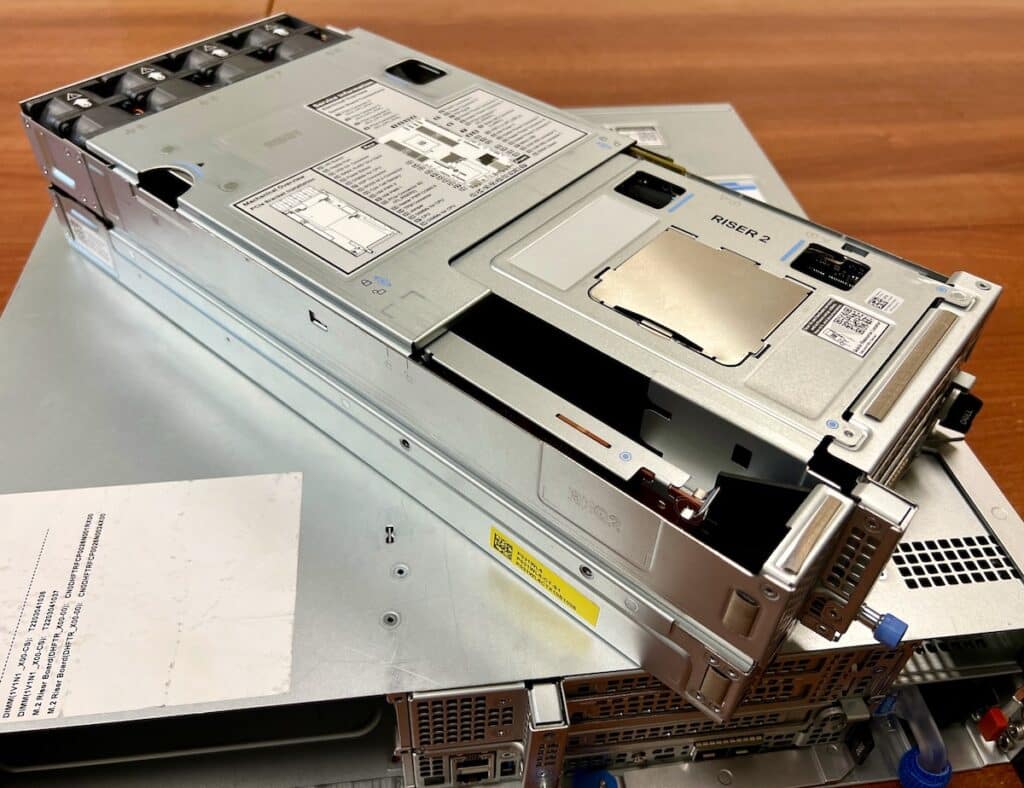
Dell PowerEdge XR8000 2U Compute Node
Each sled includes iDRAC for management, CPU, memory, storage, networking, PCIe expansion (2U sled), and cooling. The 1U sled supports one x16 FHHL slot, while the 2U sled adds support for an additional two x16 FHHL slots, which can support GPUs, SFP, DPUs, SoC accelerators, and other NIC options.
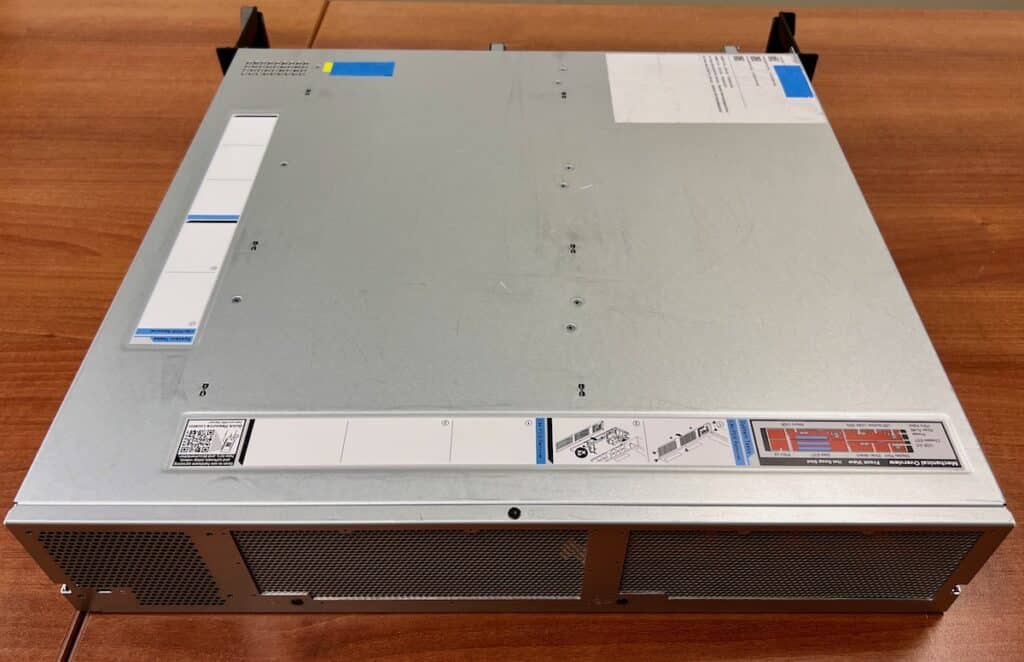
Dell PowerEdge XR8000 Rear Chassis
The XR8000 can be fully loaded in three ways: 4x 1U nodes, 2x 1U + 1x 2U, and 2x 2U nodes. The XR8000 is also optimized to operate in Class 1 environments and offers a short depth of 430 mm from the front I/O wall to the rear wall.
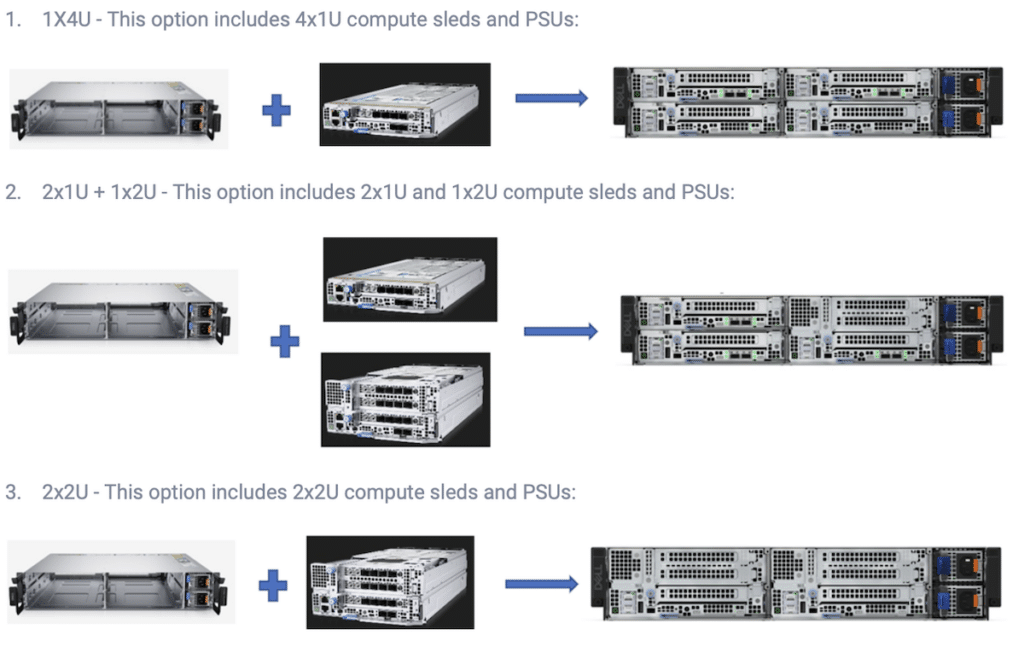
Dell PowerEdge XR8000 Node Options
Dell PowerEdge XR7620
The Dell PowerEdge XR7620 is a 2U dual-socket server that is optimized for virtualization and consolidation workloads at the edge. It features up to 32 cores per node, 6TB of memory, and 5 PCIe Gen4 and Gen5 slots.
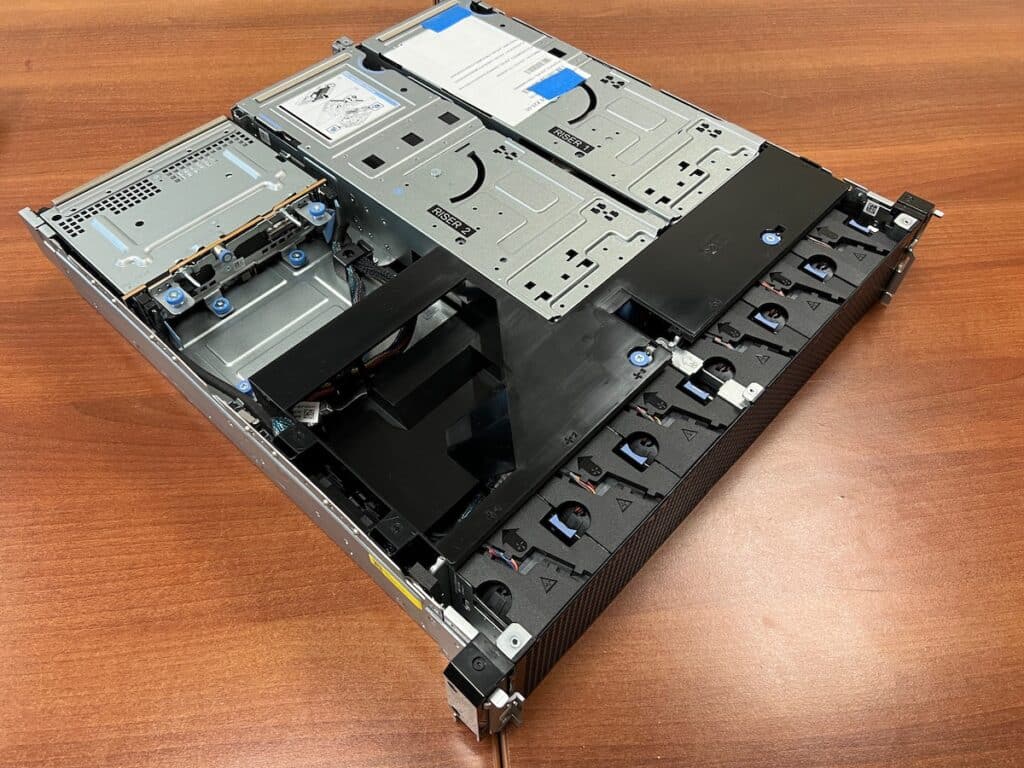
Dell PowerEdge XR7620
The XR7620 server is a high-performance, high-capacity server for the most demanding workloads, certified to operate in rugged, dusty environments ranging from -5C to 55C (23F to 131F), all within a short-depth 450mm (from ear-to-rack) form factor.
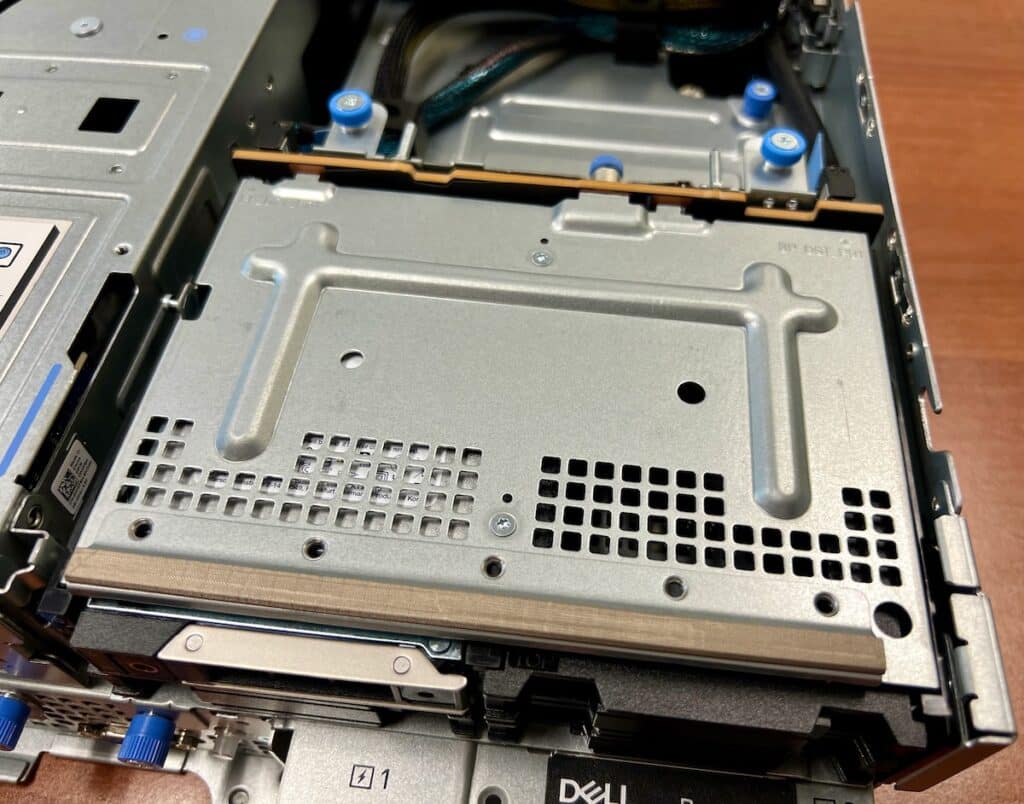
Dell PowerEdge XR7620 Storage Bay
The server provides up to 2x300W accelerator cards for GPUs to handle the most demanding edge workloads. The combination of low latency and high processing power allows for faster and more efficient analysis of data, enabling organizations to make real-time decisions for more opportunities. Additionally, the storage bays seen above can be swapped out depending on need and can offer support for additional storage form factors like E3.S in the future.
Dell PowerEdge XR5610
The PowerEdge XR5610 is a 1U single-socket server powered by 4th Generation Intel Xeon Scalable processors with the MCC SKU stack. It offers up to 32 cores, 1TB of memory, 2 PCIe Gen5 slots, and 1 OCP 3.0 slot. It is designed for target workloads in networking and communication, enterprise edge, military, and defense, all of which require AI/ML inferencing capabilities at the edge.
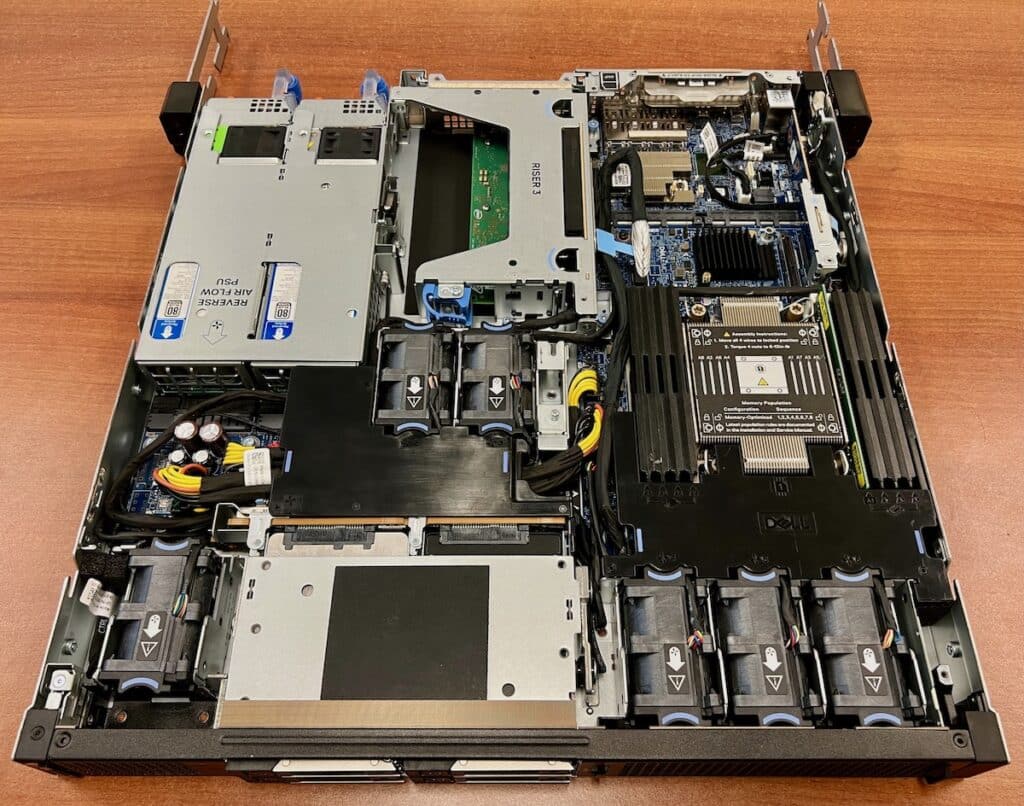
Dell PowerEdge XR5610
In Dell’s testing, the PowerEdge XR5610 delivered an impressive 46% faster image classification workload compared to the previous-generation PowerEdge XR11. The PowerEdge XR5610 is capable of handling high-performance ML workloads in edge computing environments, even in rugged and challenging locations with high temperatures.
Dell Telecom Infrastructure Blocks for Red Hat
Dell also rolled out Telecom Infrastructure Blocks for Red Hat which is a fully engineered, cloud-native solution that helps network operators build, scale out, and power core network functions using Red Hat OpenShift and Red Hat Advanced Cluster Management for Kubernetes. The solution includes hardware, software, and subscriptions network operators need to deploy a telecom cloud, simplify the design, deployment, and lifecycle management of a telecom cloud, and improve the efficiency of how they use their IT resources to reduce operational costs and power consumption.
Dell Private Wireless Program
Dell’s Private Wireless Program offers CSPs and enterprise customers more options for private wireless solutions through a diverse ecosystem of partners. The solutions are pre-tested and validated by Dell, based on open architectures, and include self-service operations capabilities. Dell removes complexity through solution integration, end-to-end management, and support.
Dell Private Wireless with Airspan and Expeto is designed for medium and large enterprises to support applications across private and public 4G and 5G networks. Dell Private Wireless with Athonet is aimed at small and medium businesses, offering an affordable and easy-to-use private wireless solution with flexibility in network architecture, radio vendor, or spectrum band.
Availability
Dell Telecom Infrastructure Blocks for Red Hat will be globally available in the second half of 2023. The new Dell PowerEdge servers will be globally available beginning in May 2023. Dell Private Wireless with Expeto and Airspan and Dell Private Wireless with Athonet are available globally now. Dell Open Telecom Ecosystem Lab Validation Services will be globally available starting in the first half of 2023.
Engage with StorageReview
Newsletter | YouTube | Podcast iTunes/Spotify | Instagram | Twitter | TikTok | RSS Feed
